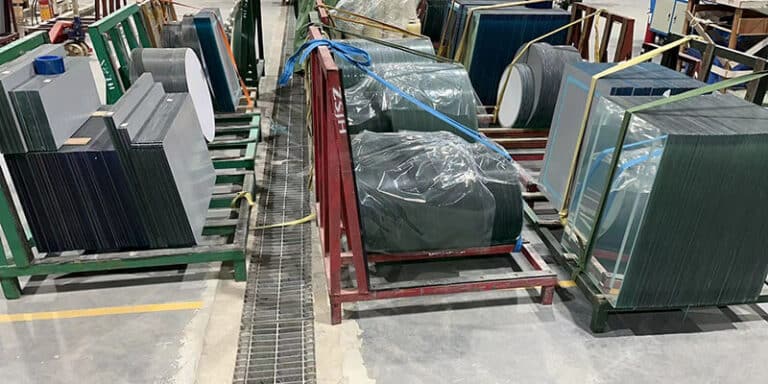Have you ever caught your reflection in the mirror and thought, “Wow, I look pretty good today,” only to take a photo and wonder who on earth that is? You’re not alone in this head-scratcher.
It turns out, there are quite a few reasons why you might look different in the mirror compared to the camera on your phone. Let’s elucidate each reason in the following paragraph.
Key Takeaways
- mirrors provide immediate feedback, allowing you to tweak and adjust your appearance in real-time to create the best possible version of yourself.
- A photo, however, captures a single moment in time, often without the opportunity for those little adjustments.
- The type of mirror and camera lens being used can play tricks on your appearance. A perfectly flat mirror should be showing you the true you, albeit flipped, while any distortion can warp your lovable features. Camera lenses can have a similar warping effect, especially if they’re not of high quality.

The Science of Reflection
Understanding Mirrors and Reflection
A mirror with pure glass and a flat reflective silver layer can bounce back light rays, allowing the generalization of real-life figures without distortions. Mirror quality depends on glass purity, glass flatness, glass thickness, types of reflective coating, protective layer, and the backing structure
The Role of Light
The color rendering index (CRI) is the most important factor in determining the quality of the light source. High CRI light includes a more saturated spectrum, allowing for a figure that is closer to the real color.
Nowadays, high-quality LED lighting can be made up to CRI95, while traditional fluorescent lights in shops only CRI70, that’s why you find the color of your clothes changes under the sunlight, which you just bought in a shop.
The same theory applies to mirrors and cameras; remember to use high CRI light sources.

Perception and Psychology
Mirror Image vs. Photographs
We tend to accept things that we are more familiar with.
Mirrors show us a reversed image of ourselves, which we’re accustomed to seeing daily. This is known as the mere-exposure effect, a psychological phenomenon in which people develop a preference for things merely because they are familiar with them.
Conversely, photographs capture you as the world sees you—not a reversed image that you are familiar with, so the image by a camera can sometimes be jarring because:
- You’re not used to seeing yourself this way.
- The camera can introduce distortions depending on lens type, angle, and lighting.
Psychological Effects of Mirror Exposure
The psychological effect makes us like images in mirrors more than in pictures.
If you’re usually smiling in the mirror, it can actually lead to feeling happier more often.
Psychologists believe that frequent exposure to our own mirror image can affect our self-esteem and mood. Positive or negative, it’s pretty powerful stuff!
In other words, your mirror doesn’t just reflect your outer self; it can also reflect your inner self, which pictures taken by camera can not.

Technical Differences
Camera vs. Mirror
Mirrors show you a reversed version of yourself, the one you see every day and are comfortable with. Cameras capture you in a flat 2D way, unlike mirrors, which can show you in a 3D way.
Lenses and Distortion
Cameras also often come with wide-angle lenses, which are great for capturing landscapes but not so much for close-up selfies. These lenses tend to cause a slight distortion that can make features appear broader or larger.
Different lenses can dramatically change how you look:
- Standard lenses (around 50mm) more closely mimic what your lovely eyes see.
- Wide-angle lenses (less than 50mm), on the other hand, can stretch your features and give you that “funhouse mirror” vibe.

Tips for Looking Good in Photos
Looking good in photos often comes down to a combination of confidence, preparation, and technique. Here are some tips that can help you present your best self in photographs:
- Practice Good Posture: Stand up straight with your shoulders back and down. Good posture can instantly improve how you look in a photo.
- Find Your Angles: Everyone has angles that are more flattering for them. Turn your body slightly to the side to create a more dynamic pose rather than facing the camera straight on.
- Smile Genuinely: Think of something that makes you happy to evoke a genuine smile. A fake smile can look stiff and awkward in photos.
- Use Soft Lighting: Soft, diffused lighting can help smooth out skin and reduce harsh shadows. Natural light, especially during the golden hour, can be very flattering.
- Dress for Success: Wear clothes that make you feel confident and comfortable. Solid colors are generally better than busy patterns, which can distract from your face.
- Makeup and Grooming: A touch of makeup can help even out your skin tone and define your features. For men, grooming facial hair and managing shine can make a big difference.
- Check Your Background: A cluttered or distracting background can take the focus away from you. Choose a background that is simple and complements your outfit.


